The pop-up book “Sai Gon Pho” (Saigon Streets) is a special travel book spotlighting the city’s most popular
landmarks in 3D format. It has been selected as one of eight signature souvenir products of the city for foreign tourists.
Saigon Streets” is the brainchild of four students from the Department of Industrial Arts of Van Lang University in Ho Chi Minh City, including Dang Hoai Vu, Pham Thi Bich Thao, Luong Thi Thanh Truc and Nguyen Vu Tuan Phat. The book aims to introduce tourists to destinations throughout the city.
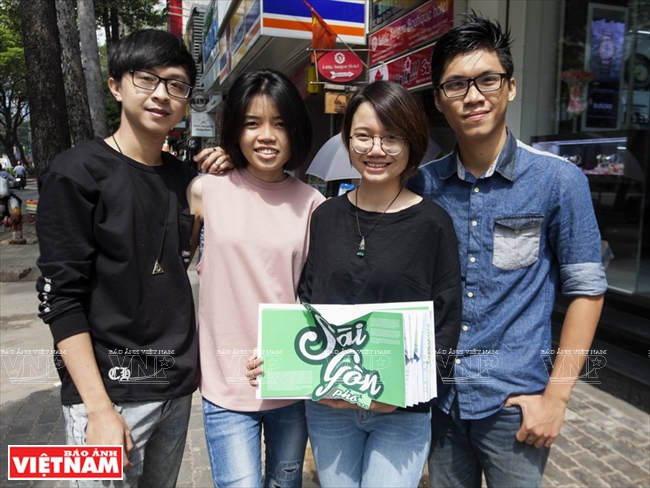
The young authors of “Sai Gon Pho”. Photo: Thong Hai/VNP
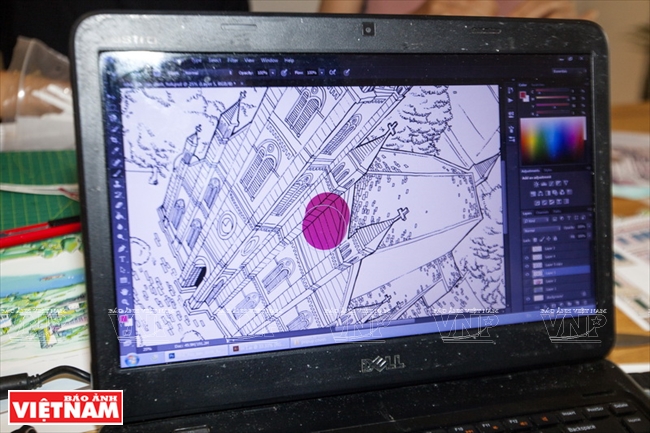
Colouring beauty spots in Saigon using the graphics sofware. Photo: Thong Hai
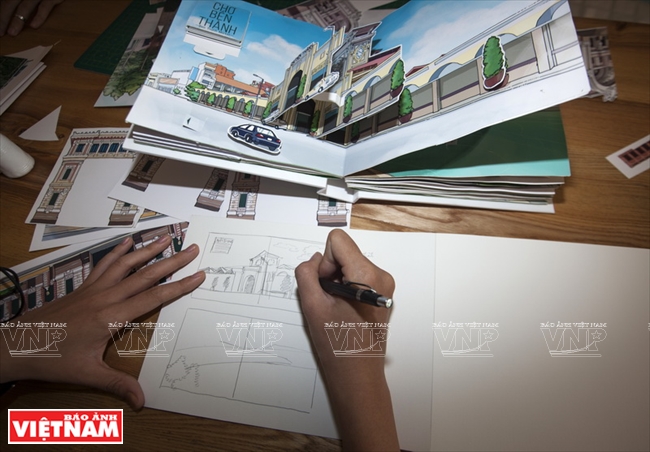
Sketching destinations in Saigon. Photo: Thong Hai
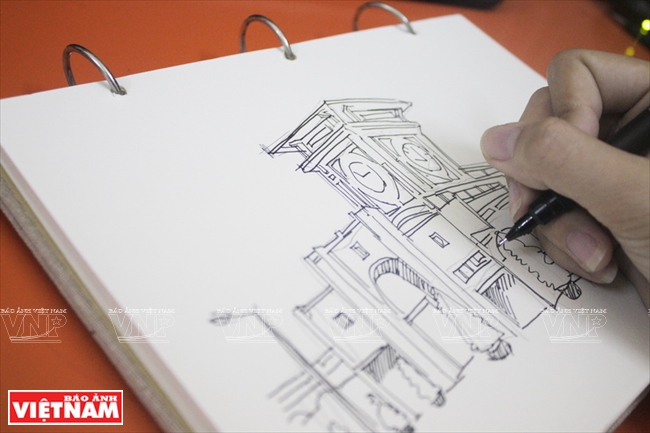
Sketching by hand. Photo: Thong Hai/VNP
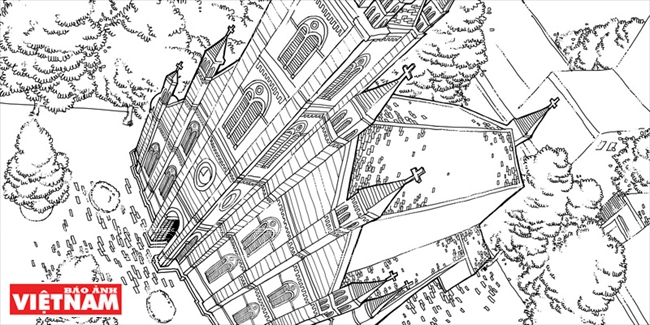
A sketch of Tan Dinh Church. Photo: File
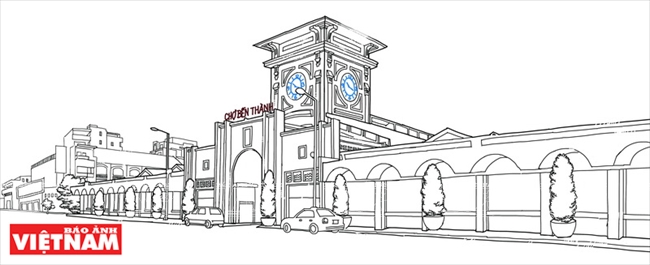
A sketch of Ben Thanh Market. Photo: File

Preliminary illustration of the Binh Loi Bridge. Photo: File
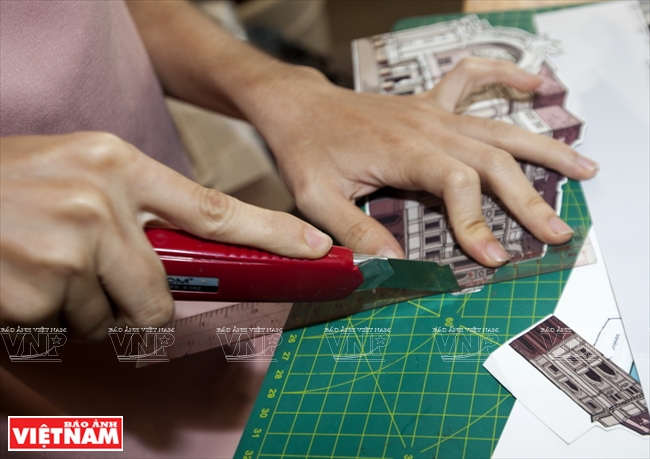
Images are cut and attached to form the book. Photo: Thong Hai/VNP
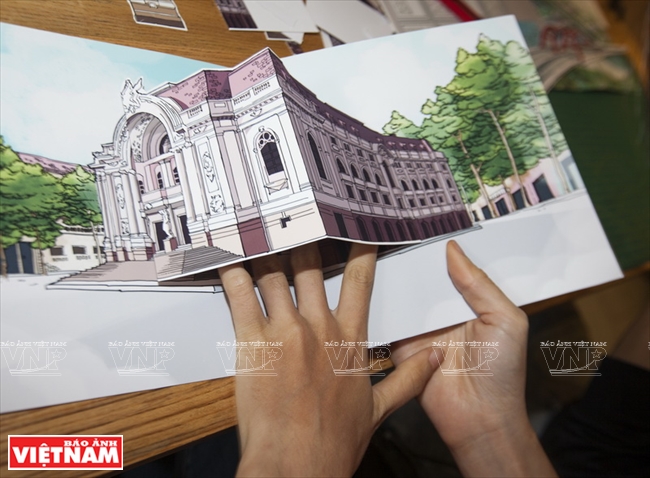
“Sai Gon Pho” is a kind of 3D picture book about Ho Chi Minh City. Photo: Thong Hai/VNP |
Pham Thi Bich Thao, a member of the team, acknowledged that a tourist’s guidebook with plain pictures and information might not leave much of an impression, but paper pop-ups of the landmarks might tempt readers to visit the sites immediately. Therefore, the team ultimately decided on a pop-up book to make it more visual for tourists.
Though pop-up books are popular around the world, it is still a new trend in Vietnam. According to Truc who also participated in the project, in order to create the book, she and her team members had to purchase pop-up books from abroad for reference, consult online sources to learn the techniques and find a unique way to fold papers.
As it was their first experience, they encountered many challenges along the way, such as building ideas, compiling documents and images, preparing and editing the content, creating the layout, drawing the buildings, learning folding techniques and printing the finished product. Most of the stages are done by hand, so they need to be meticulous and skillful. Sometimes, they have to be patient to redo the pages again and again until getting a satisfactory final product.
One of the important stages is folding. To make the paper buildings pop-up when the page opens and fold properly when the page is turned, they tried various paper-folding techniques. The sizes of the objects and the paper had to be perfect down to the millimeter. In addition, proper glue also plays a crucial role because it must firmly seal the 3D objects to the paper.
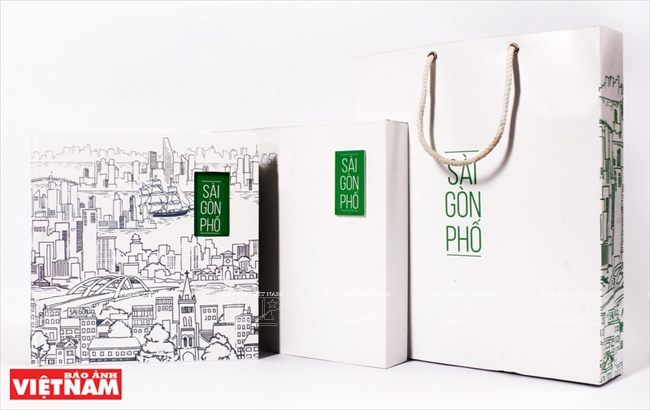
The cover of “Sai Gon Pho” is a combined picture of famous destinations in the city. Photo: Thong Hai/VNP
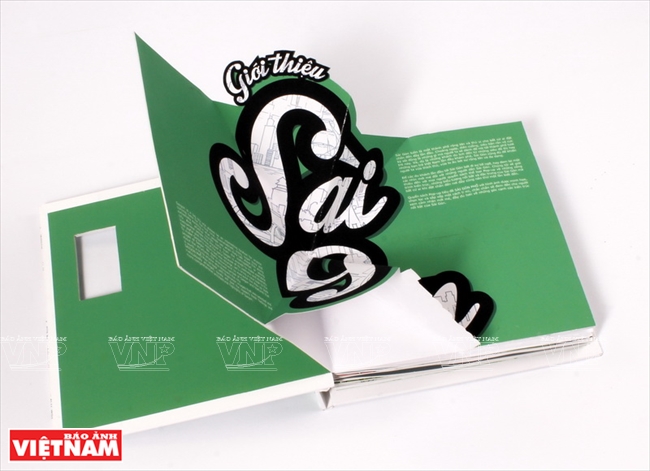
“Sai Gon Pho” is impressively designed with the colour of green. Photo: Thong Hai/VNP
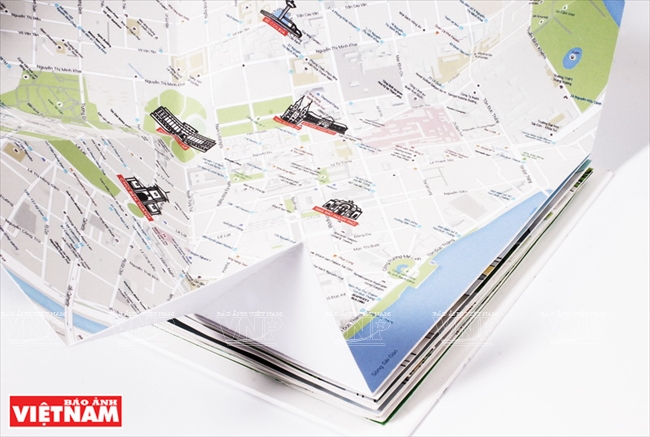
Map directions to each famous destination in Sai Gon. Photo: File
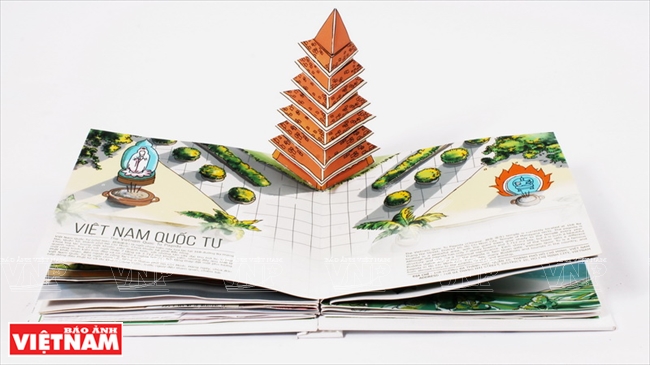
Vietnam Quoc Tu is located on Street 3/2, District 10, Ho Chi Minh City. Photo: File
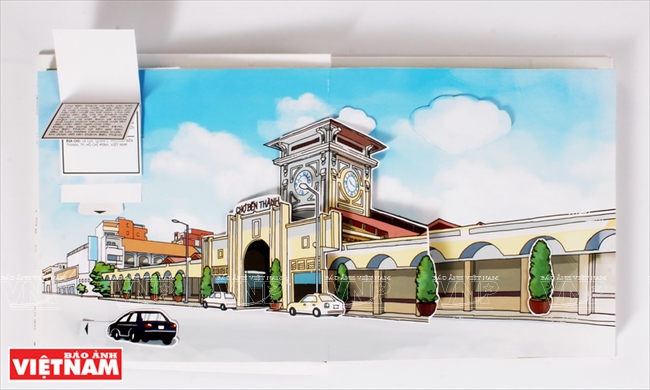
A sketch of Ben Thanh Market. Photo: File
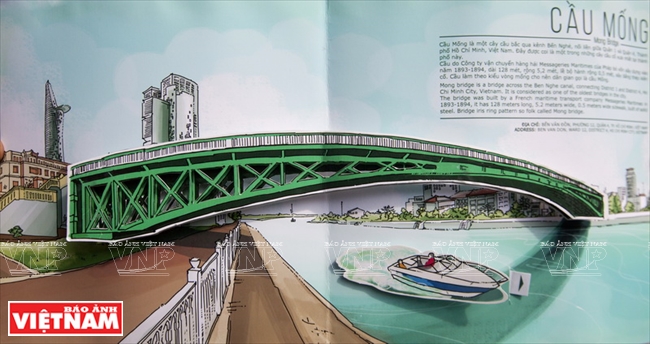
The Mong Bridge in the book. Photo: Thong Hai/VNP
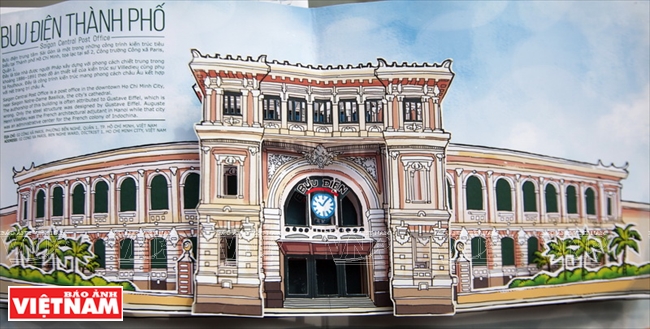
The Central Post Office in the book. Photo: Thong Hai/VNP

An illustration of Tan Đinh Church.

Binh Loi Bridge in the book. Photo: Thong Hai/VNP
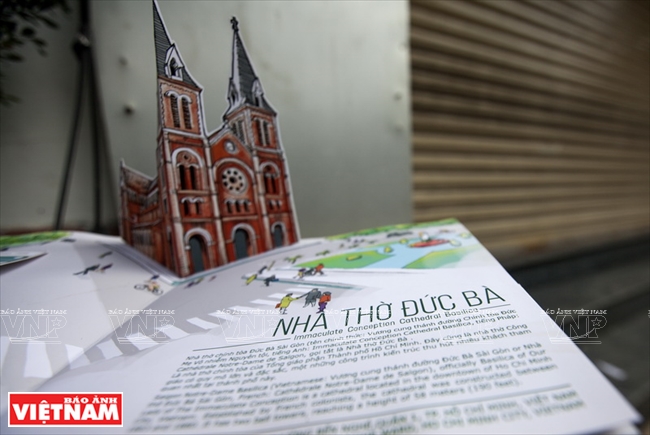
A 3D paper version of Notre-Dame Cathedral Basilica of Saigon. |
The book starts with an introduction about the dynamic and young city of Saigon – Ho Chi Minh City with distinctive cultural values and a map that enables tourists to easily find attractions in the city. The book mainly unveils miniature paper replicas of ten remarkable landmarks in the city, like Turtle Lake, Saigon Notre-Dame Cathedral, Central Post Office, Ben Thanh Market or bridges of special historical values such as the Mong and Binh Loi Bridges.
Each paper pop-up is unique and can be viewed from various angles on the page. Most interestingly, some pop-up features are moveable, like the buses, cars and motor boats, which bring the book to life. In addition to each illustration, brief introductions are provided on the history of each site in both Vietnamese and English to create convenience for foreign tourists.
Although the book has not been officially published yet, it received its first positive feedback from the HCM City Department of Culture, Sports and Tourism, which selected it as one of eight souvenir products to introduce local culture to international friends.
Story: Nguyen Vu Thanh Dat - Photos: Thong Hai &Files